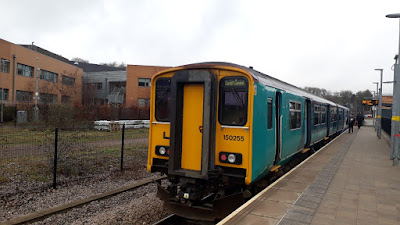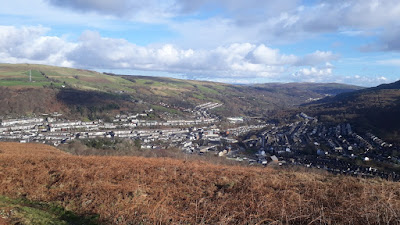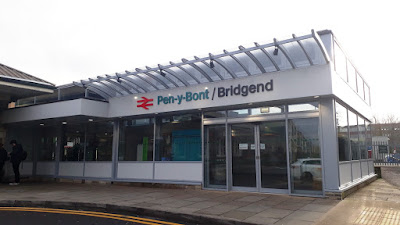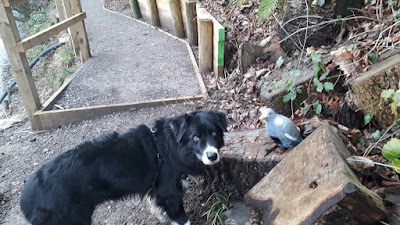What was it about Cardiff during the late 19th and early 20th centuries that saw it become a thriving city? The population exploded from just 1,870 residents in 1801 to 164,33 by 1901, with industry, transport, shopping and leisure all growing with it.
Take a walk and explore this period of Cardiff’s history, from the industries that brought the wealth through to the people who lived, worked and played in the city. We will look at the architectural achievements as well as some of the quirky stories of those who called Cardiff their home.
Click on the icons in the map to reveal more about Cardiff history.
Much of the information in the map was compiled by members of Cardiff U3A. My thanks to them.
CARDIFF CENTRAL STATION
Opened in 1850 and now a Grade II listed building. Originally called just Cardiff Station it was renamed Cardiff General in 1924, and then Cardiff Central in 1973. In the early 1840s the South Wales Railway was trying to find a suitable site for a railway station, but the area that is now Cardiff Central railway station was prone to flooding. It was Isambard Kingdom Brunel who came up with solution to divert the River Taff to the west, creating a larger and safer site for the station.
 |
| Cardiff Central Station |
The water tower
A Grade II listed building, previously used to supply water to locomotives on the Great Western Railway. At 15 m (50 ft) in height, it was completed in 1932 was painted in 'chocolate brown and stone', the livery colours of the Great Western Railway. It has undergone a few changes in colour over the years.
 |
| Cardiff Central Station water tower |
Mosaics
Don't forget to take a look at the mosaics by Rob Turner (2003) not far to the east of the Central Square entrance which depict the range of different people who have worked at Cardiff Centre Station and used its services over the course of the past century.
 |
| Cardiff Central Station Mosaic |
GEORGE AUGER, TALLEST MAN ON EARTH
Back in the 1800s and early 1900s the space now we know as Central Square used to be covered by densely packed houses called Temperance Town. It has recently been discovered that this was the birthplace of George Auger, the Cardiff Giant who later joined the Barnum and Bailey Circus in America and was billed as the 'Cardiff Giant, the tallest man on earth'.
Read more about his fascinating story here:
Captain George Auger, the Cardiff Giant, tallest man on Earth and the Jimi Hendrix connection.
SAINT MARY'S CHURCH
Saint Mary's church is no more. The church was badly damaged when the River Taff flooded in 1607 with bones and coffins from its graveyard being washed out to sea. Accounts state a mini tsunami swept up the Bristol Channel! St.Mary’s was finally abandoned in 1701. The church gave its name to nearby St Mary's Street. A new St Mary's church was later built on Bute Street, south of the railway station. The current Prince of Wales pub now stands on this church’s original site. On the side of the pub on Gt. Western lane entrance is an unusual outline of the original Saint Mary’s church.
 |
| The outline of the original St Mary's church n the side of the Prince of Wales pub |
 |
| A 1610 map of Cardiff with St Mary's church at the bottom right. |
PRINCE OF WALES THEATRE
Originally built as the Theatre Royal in 1878 and later renamed the Playhouse Theatre. It then became the Prince of Wales theatre then a cinema and converted to a Wetherspoon's pub in 1999. The 19th century was an age of live theatre, there being a huge demand as the Industrial Revolution took hold. Architecturally speaking it is a quirky building: one side having Gothic revivalism fronting onto Wood Street and the other main entrance fronting onto St Mary Street, is a Classical style, as a Greek temple which was added later in 1927. By then the theatre had a capacity of almost 2000. The pub still retains many features of the original theatre and programmes and other memorabilia from the theatre days are on display. You may prefer to look at the features
on their website. Stars which played the theatre included Richard Burton, Laurence Olivier and John Gielgud.
 |
| Prince of Wales theatre as it used to look inside (pic credit: People's Collection Wales) |
Take a look above the entrance on St Mary Street and you will see a statue. She is Hebe, daughter of Zeus in Greek mythology. She possessed the ability to restore youth. Hebe married Heracles and was cupbearer to the gods, serving them ambrosia. Here she is depicted gazing at the cup of immortality as she raises it with her left hand.
 |
| Statue of Hebe above the Queen's Street entrance to Prince of Wales |
PIERHEAD CLOCK MECHANISM
The historic Pierhead Clock mechanism is the main feature of a street artwork in a glass tower in St Mary Street.
It began life in the Pierhead Building in Cardiff Bay in 1897 but was sold to a collector in America in the 1970s before returning to Wales in 2004.
 |
| Pierhead clock mechanism on St Mary Street |
The Pierhead clock that stood in Cardiff docks for nearly 80 years was unveiled on Tuesday November 8th, 2011, after being restored to its former glory by world renowned clockmakers, Smith of Derby. A special parade was held to mark the unveiling of the Pierhead Clock, which returned to Cardiff after an absence of nearly 40 years, including a Royal British Legion marching band.
The turret clock mechanism, which weighs approximately 1,000lb (454kg) and had to be wound manually once a week for the clock to keep time, is almost identical to the one which powers Big Ben in London.
The clock had been auctioned off by British Rail in 1973 and then sold on to an American collector, Alan Heldman, three years later. In 2004 he decided that the mechanism should be returned from Alabama to Cardiff.
The artist Marianne Forrest created the housing for the clock mechanism. It also houses three replica monkeys, which will strike hourly chimes, which have local historical significance. The monkeys were designed by the Marquess of Bute for one of the rooms of Cardiff Castle as a rebuttal of Charles Darwin's theory of evolution.
 |
| The monkeys in the Pierhead clock mechanism |
The clock stands in the spot where, in the late 18th Century, ships would have operated before Cardiff Docks were built and before the River Taff was diverted.
Unfortunately it seems the restored clock no longer works and the information boards have been removed.
 |
| Former information board at Pierhead Clock mechanism, Queen's Street |
BLACK LION
Many Cardiffians who were born and bred here will never have noticed the black lion perched on the roof of the Sandingham Hotel.
 |
| Black Lion, Sandringham Hotel, Queen Street |
A quick glance upwards as you journey through St. Mary Street shows a real mix of architectural styles. The top storeys and skylines are adorned with Victorian, Classical, Gothic and even Renaissance features. There is even a lion in repose if you look hard enough.
So why is it up there. For the simple reason that the Sandringham Hotel used to be called Ye Old Black Lion when it first opened in the 1880s. It is thought that it was named the Black Lion as the family that owned it had a black lion in their heraldic coat of arms.
 |
| Sandringham Hotel, Queen Street, Cardiff |
BOROUGH CHAMBERS
Cast your eyes on this example of 'Streaky Bacon Architecture', just off St Mary Street in Wharton Street
The industrial revolution led to a variety of machines powered by steam. From about 1850 onwards this technology was used to manufacture of bricks. Being pressed by machines, rather than by hand, meant that bricks were of a more regular size and could be laid more quickly. Furthermore, different clays were used to make them, and in a variety of colours. The Victorians threw them up into their external walls in a flurry of what was called constructional polychromy. The latter is a term meaning the use of a number of differently coloured bricks and stone. Check out the different coloured patterns used above the Borough Chambers, Wharton St., opposite the James Howells store. A “streaky bacon style” can be see between the windows where alternative bands of cream and red brick decorate the facade.
 |
| Borough Chambers, Wharton Street, Cardiff |










































